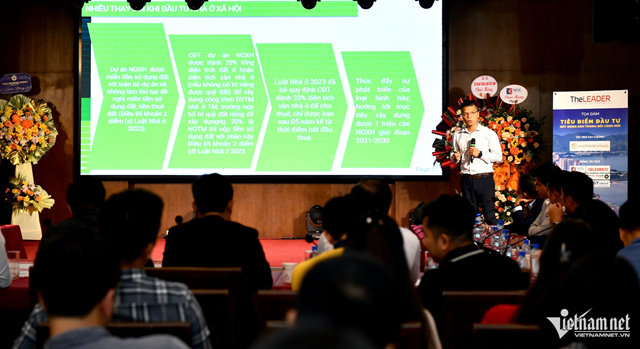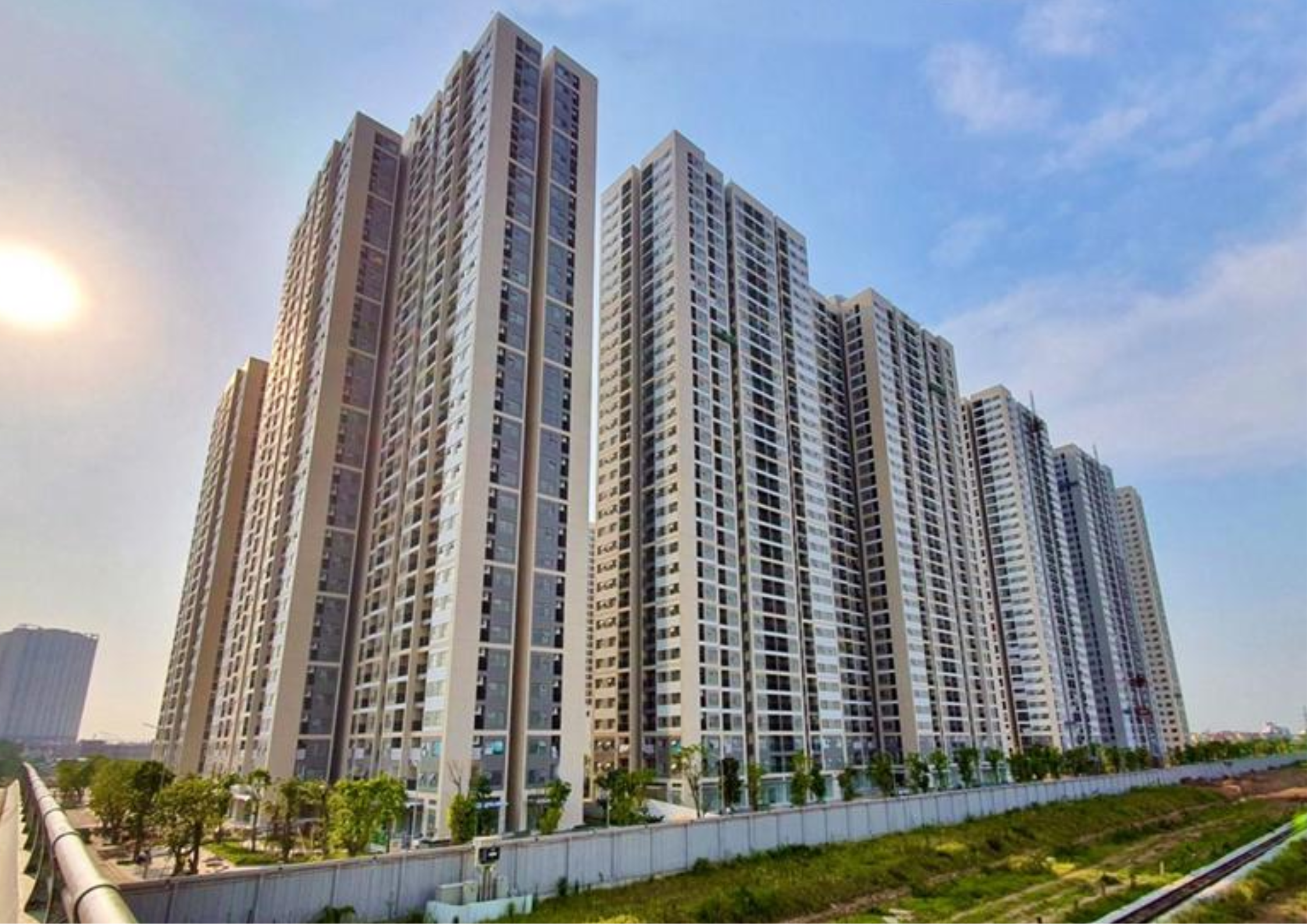Speaking at the seminar, Mr. Nguyen Van Dinh, a real estate legal expert, shared his thoughts on the ongoing challenges surrounding agricultural land. He noted that with the vibrant state of the real estate market, people can no longer afford to idle away their time solely growing rice. As a result, there is a growing tendency among the populace to hoard agricultural land for commercial ventures.
Mr. Dinh highlighted the current wastage of agricultural land due to abandonment. He expressed his hopes that the new law would “unshackle” agricultural land, citing instances where people combine aquaculture with agriculture, achieving 30 times the revenue of rice farming, despite contravening existing regulations.

Mr. Nguyen Van Dinh, Real Estate Legal Expert, shares his insights at the event.
In reality, the Land Law promotes balanced regional development, catering to diverse entities. While rice cultivation ensures national food security, rice farmers also require mechanisms to safeguard their interests. Likewise, certain impoverished provinces have resorted to constructing golf courses, urban areas, and industrial parks to boost their economic status.
“I highly commend the law’s emphasis on balanced development. Notably, the law includes provincial planning to preserve rice fields and incorporates budgetary regulations from related laws to provide financial support to these provinces,” said Mr. Dinh.
Additionally, Mr. Dinh praised the law’s efforts to strike a balance among various stakeholders by expanding the spatial usage of land. This includes creating legal corridors for land reclamation, coastal expansion, and vertical or underground spatial utilization. He asserted, “If we cannot increase the horizontal or vertical land area, we must enhance the quality of land usage. Hence, I applaud the law’s promotion of multi-purpose land utilization.”
Another commendable aspect, according to Mr. Dinh, is the law’s endorsement of combining rice cultivation with commercial models. He referenced instances where coffee cultivation, generating monthly revenues equivalent to annual rice farming incomes, has lacked a legal framework and been deemed illegal. The new law aims to legitimize these practices by harmonizing the interests of diverse societal entities.
To that end, individuals must present their plans to the managing authorities to ensure stringent control when using agricultural land for commercial purposes. This approach will synchronize the interests of the state and its citizens.
Furthermore, Mr. Dinh emphasized the importance of implementing budgetary measures to safeguard the rights and obligations of the people. He suggested that those benefiting from the commercial usage of agricultural land should contribute a portion of their profits to the state budget, ensuring that other entities also benefit from these ventures. This, he believes, is a crucial aspect of the land law’s implementation process.
However, Mr. Dinh expressed concern about the delicate balance between combining agricultural land with commercial ventures and the potential for illegal land-use conversion. He worries that people might exploit the flexibility to build concrete structures, making it challenging to revert the land to its original agricultural purpose.
Echoing similar sentiments about the proliferation of homestay and farmstay businesses without proper planning, Mr. Le Van Binh, Deputy Head of the Land Department, Ministry of Natural Resources and Environment, offered his perspective: “In my opinion, there are two approaches: one where agricultural producers use their land for tourism purposes, and the other where tourism land is utilized for agricultural attractions, classifying it as commercial land.”
The Land Law, as outlined in Article 218, permits the multi-purpose usage of agricultural land to boost income, provided it aligns with the primary agricultural purpose and does not entail a complete change in land use.








































